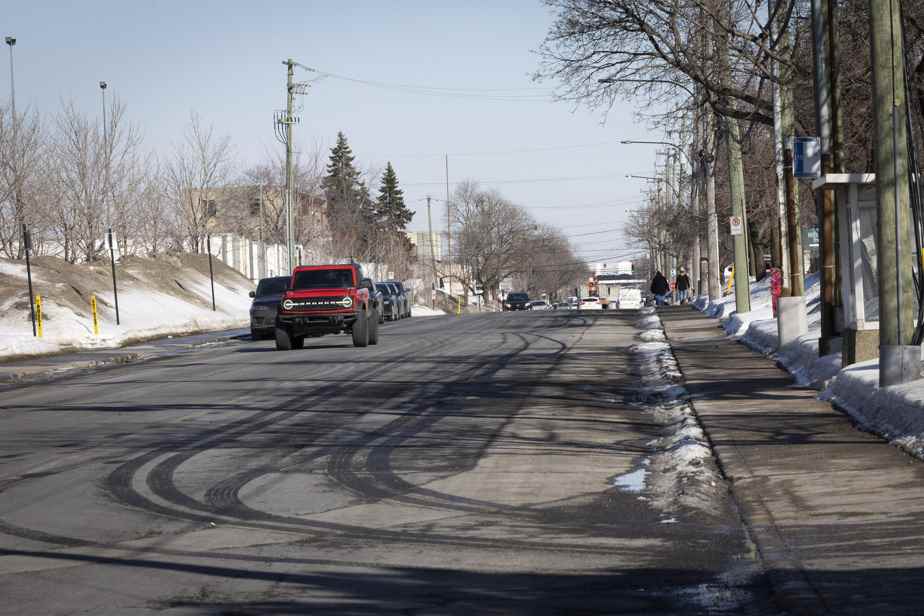A pharmaceutical group denounces the lack of public transport in the industrial sector of Royalmount. In an unusual step, the company, which has registered with the Quebec Lobbyists Registry, is asking the Société de transport de Montréal (STM) to improve its service to allow its workers to get to work safely. .
Pharmascience, which has been located on Royalmount Avenue for several years now, has in fact taken steps these days to “improve the mobility of employees in the industrial district of Royalmount who have difficulty getting to work by public transport common,” reads an online entry in the Registry of Lobbyists. It is rather rare to see a company take such steps.
With more than 1,500 employees, the group says it wants to start “discussions” with the STM, the City of Montreal, the borough of Côte-des-Neiges–Notre-Dame-de-Grâce and the Town of Mount Royal in order to “ improve” service in this “landlocked sector” of the island.
Currently, Pharmascience employees have two choices: disembark from the metro at De La Savane station then walk 20 minutes in an industrial district dominated by cars and often dangerous for pedestrians, or disembark at the Namur metro station and take the line 115.
The problem: this line is only in service in the morning and at the end of the afternoon; there is therefore no service between 9:30 a.m. and 2:30 p.m., while employees work atypical hours.
A spokesperson for Pharmascience, Marie-Laurence Tourillon, specifies that the company “advocates an increased bus service on line 115 for the sector from the Namur metro station, as well as the connection of boulevard Cavendish to the ‘highway 40’.

INFOGRAPHIC THE PRESS
“The issue is urgent given the difficult labor environment for manufacturing companies and the strong international competition in the pharmaceutical sector. The major construction works of the Royalmount and Blue Bonnets projects will only aggravate the traffic problems in the area”, she continues, speaking of “chronic congestion problems”, both for employees and for the reception of goods.
This issue is crucial for the growth of our company and for its ability to supply the Quebec healthcare system with drugs.
Marie-Laurence Tourillon, spokesperson for Pharmascience
At the STM, it is said that it is still “too early” to comment on this file “while discussions are underway”. It does not, however, rule out enhancing its service offering in the sector.
“We are in contact with the various stakeholders to define the needs. If the consultation process reveals the need to set up new services or modifications to existing services, the changes will be communicated to customers in due time before they come into force,” said spokesperson Philippe Déry. , in response to our questions.
The cabinet of the mayoress of Montreal, Valérie Plante, says it is aware of the “impacts that will have” the Royalmount on the mobility of Montrealers. “We understand the desire of employees who work in the sector to have more options in public and active transportation, because the need there is great. Which is true for this sector, but also for others, especially in the east of Montreal,” says press officer Marikym Gaudreault on this subject.

PHOTO PATRICK SANFAÇON, THE PRESS
Pharmascience offices on Royalmount Boulevard
“We will support the Autorité régionale de transport métropolitain, which is responsible for planning public transport for this project. There is currently good collaboration between the developer, the Town of Mount Royal and the borough of Côte-Des-Neiges–Notre-Dame-De-Grâce. We are working in particular to ensure secure access to the De La Savane station by means of a footbridge,” she recalls.
Alternative solutions?
According to transportation planning expert at the University of Montreal Pierre Barrieau, industrial neighborhoods are still “the most difficult to serve” by public transit. “That said, there are solutions: at a minimum, we should increase the offer with taxibus services, as we see in Lachine, and evaluate other transitional measures,” he explains.
“Currently, the STM is lagging behind a bit compared to other transit companies for its service in industrial zones in general. In Toronto, for example, they have been very innovative in the suburbs in their transportation offer in industrial districts. It is possible to do so,” continued Mr. Barrieau.
However, the delicate budgetary situation of the STM, which declared in November a financial hole of 78 million, risks complicating its field of action, believes the specialist. “It takes better long-term planning. In this case, the most unfortunate thing is that we penalize workers with often less means, who have more difficulty buying a car, for example,” he concludes.
